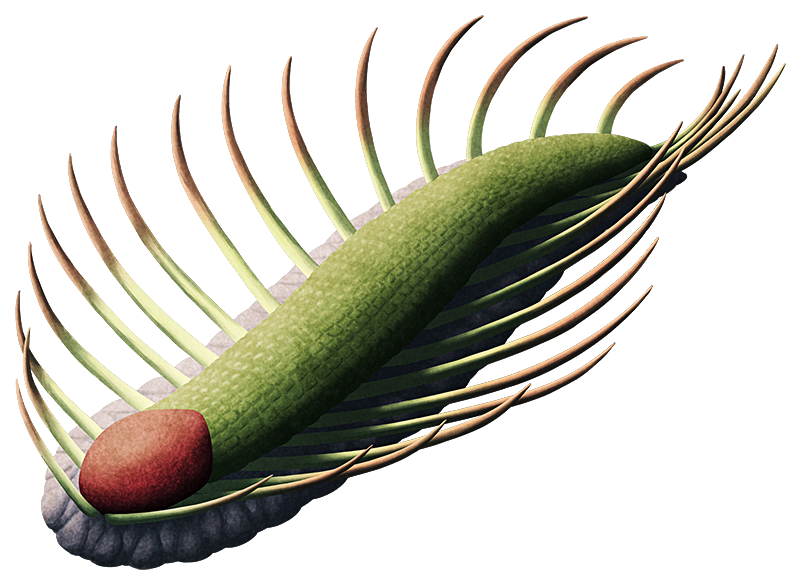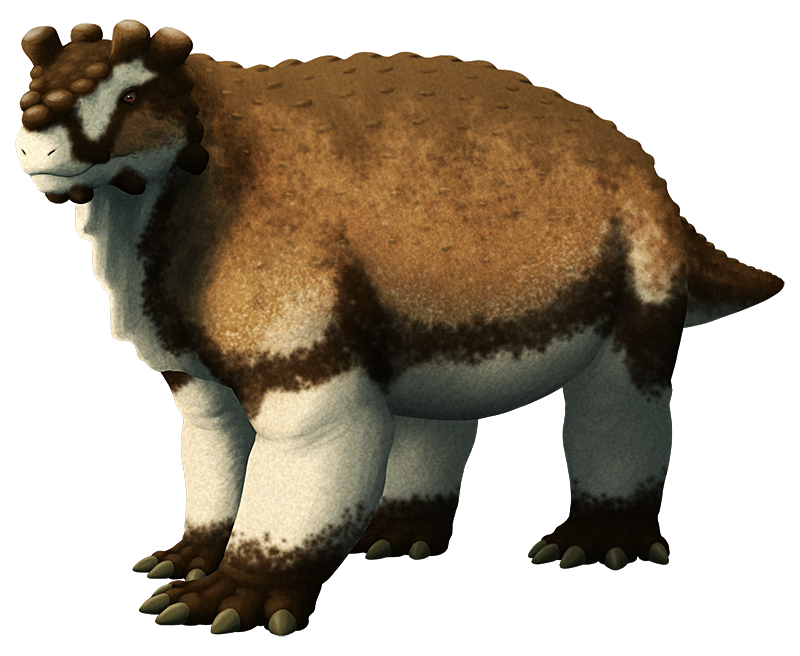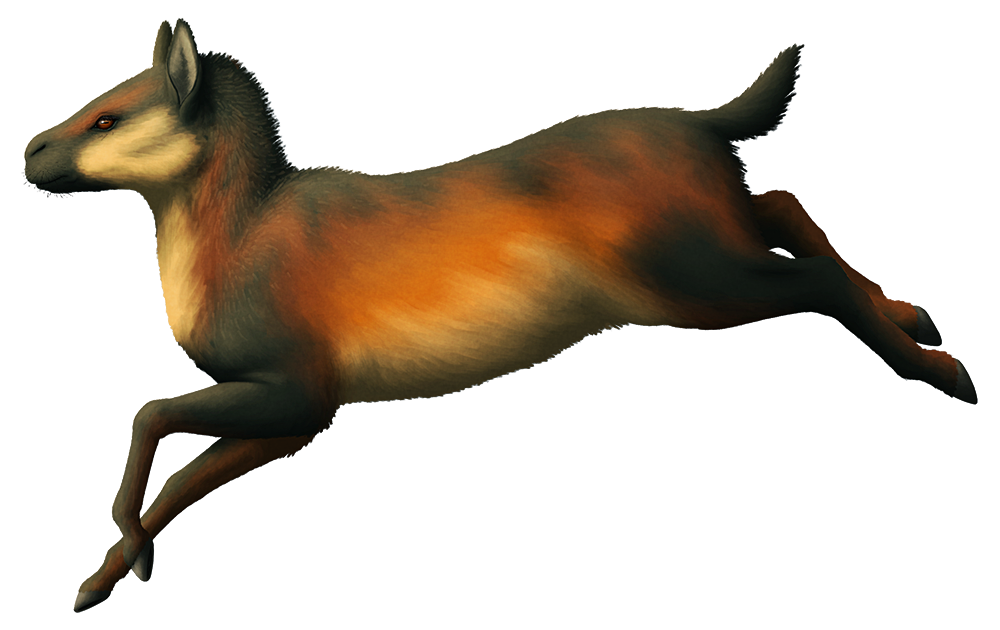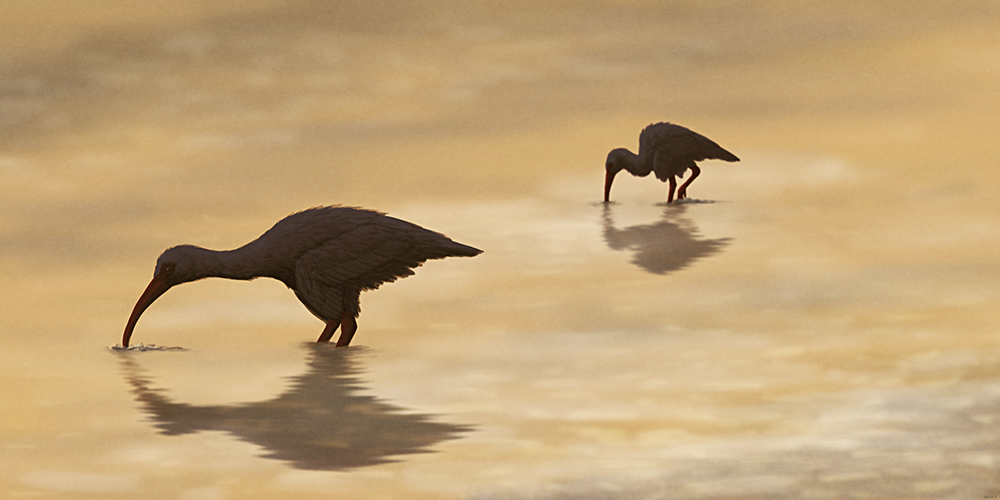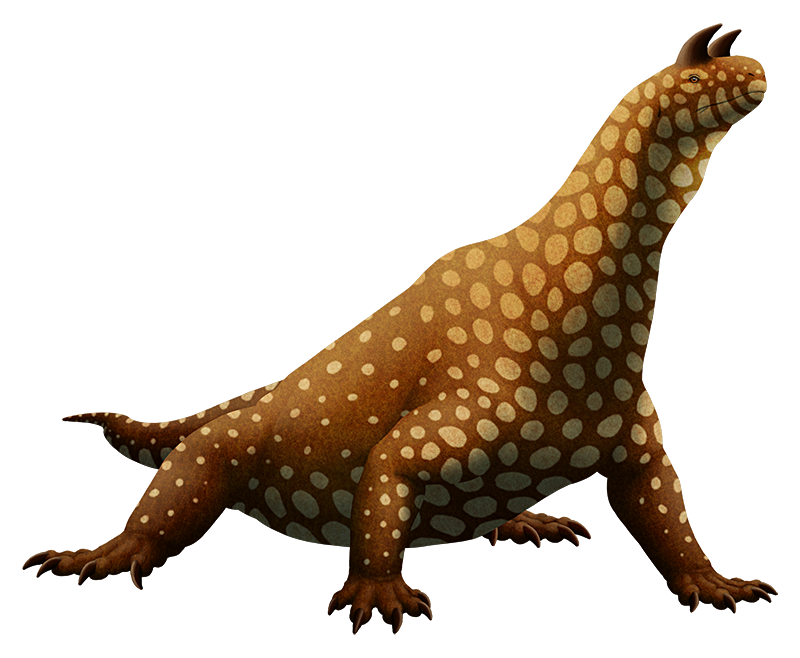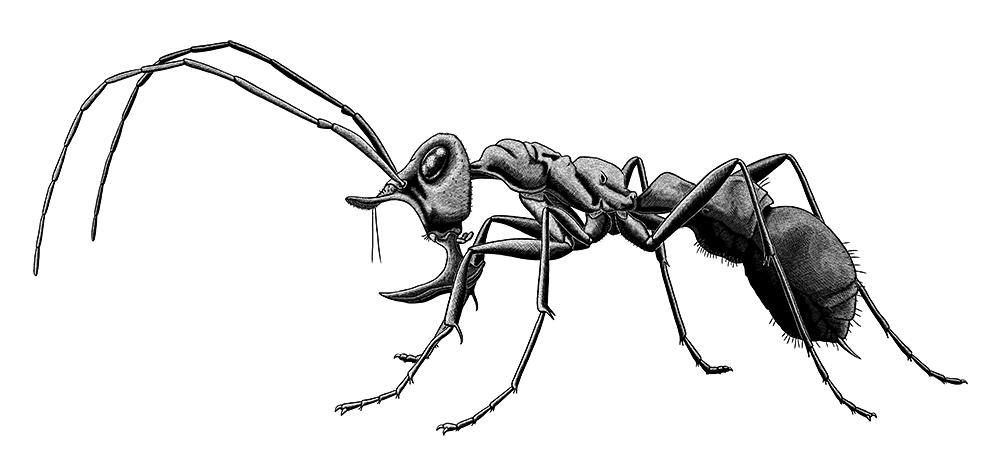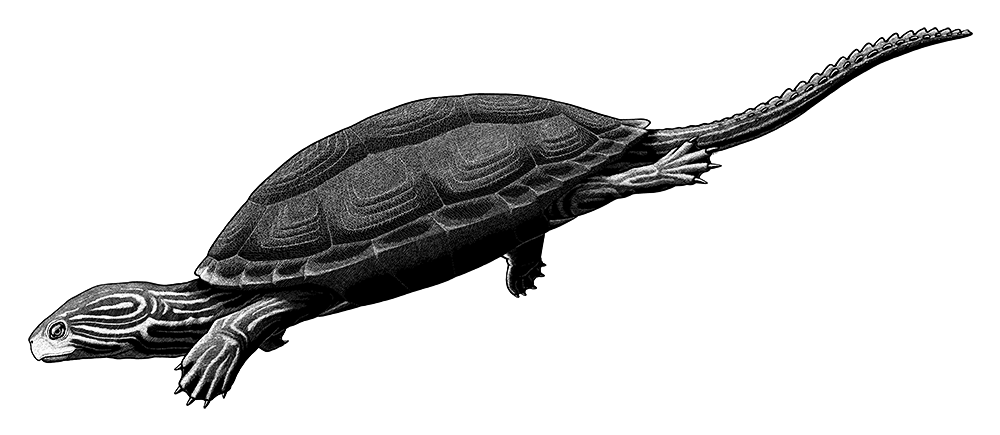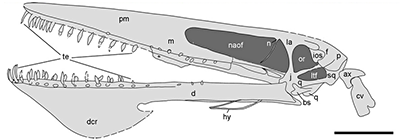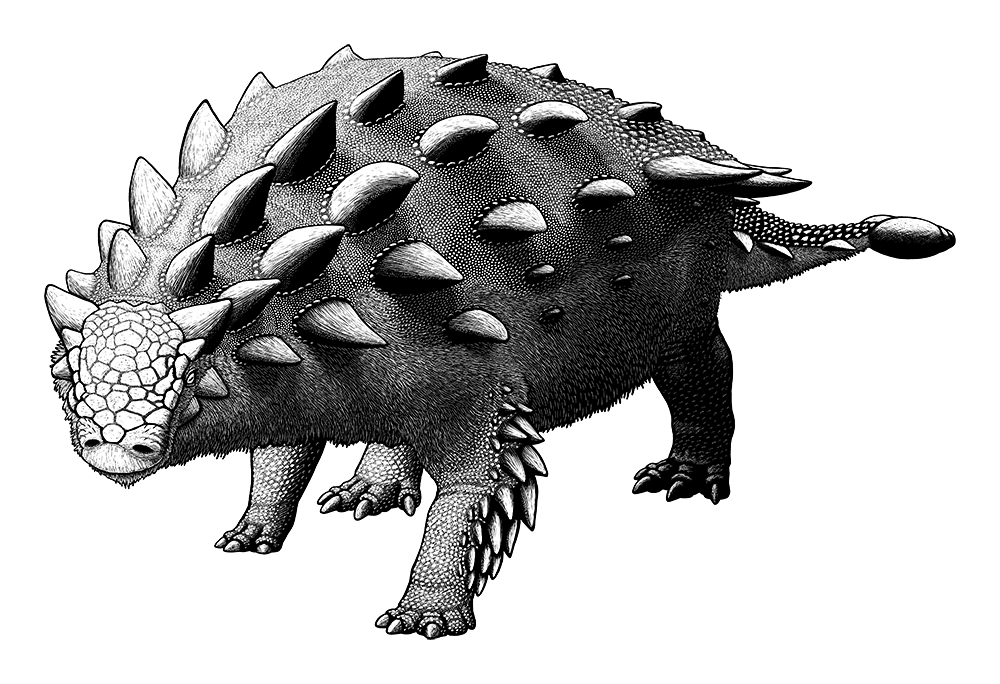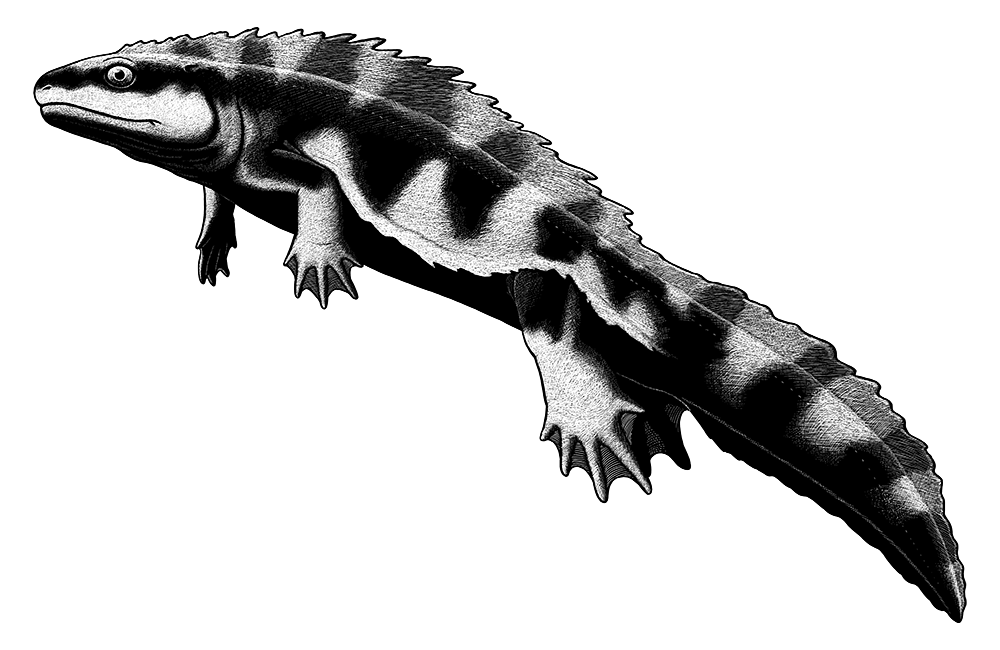Orthrozanclus elongata, from the mid-Cambrian of China. Only about 2cm long (~0.8″), this tiny creature was covered in both long spines and extensive armor – with tile-like scales on its back, overlapping dagger-shaped plates around its sides, and a small shell on its head.
It’s the second species of Orthrozanclus to be discovered, extending the genus’ range about 10 million years older than the Canadian O. reburrus.
Although it would have been a member of the Lophotrochozoa (the group that contains modern molluscs, annelid worms, and brachiopods), its exact evolutionary relationships are still uncertain. It might have been a transitional form between Wiwaxia and the halkieriids, or it could be closer related to the brachiopods.

